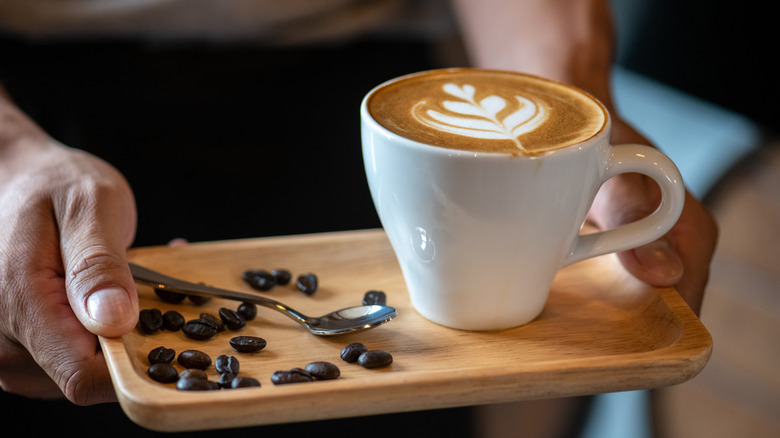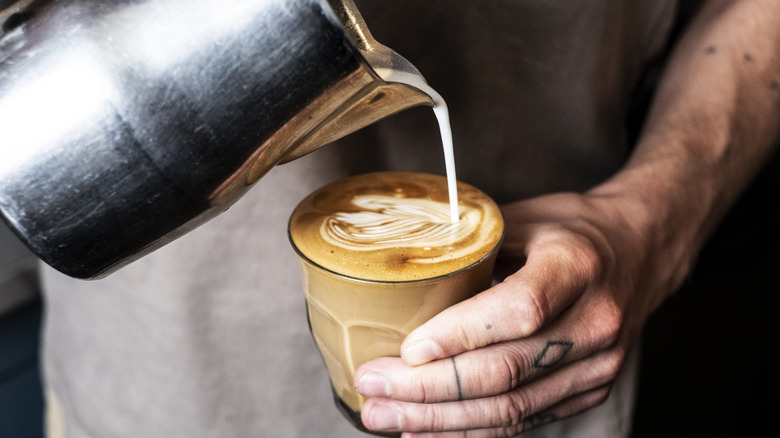How To Perfect Latte Art Without Wasting Your Coffee
Crafting latte art — attractive hearts, flowers, and rosettes out of steamed milk on top of freshly brewed espresso — is a talent that was once solely the realm of the experienced barista. But these days, based on the plethora of Instagram and TikTok videos, mastering more and more complex coffee art is a popular way to punch up your morning java at home. The challenge is learning to make even the simplest latte heart or panda face takes practice. And that takes cups and cups of coffee. And coffee is expensive.
The beginner home barista can practice latte art without breaking the bank. In this case, it involves water, just a few drops of dish soap, and some food coloring. Rather than burning through dozens or hundreds of cups of coffee with pricy beans, this technique allows you to arguably become a latte art expert in a matter of days, with enough practice.
A latte, at its core, is a pretty simple coffee drink. It's essentially fresh brewed espresso (either hot or cold brewed) and warmed milk, often aerated into a foam using a milk frother or steam wand. While the latte itself (as we know it) was developed in Italy in the early 1900s, the concept of latte art is much more recent. In the 1980s, David Schomer opened the Seattle coffee shop Espresso Vivace, and it was here that he and his team began pouring patterns, inspired by techniques he'd seen in northern Italy.
Practice latte art using dish soap
Successful latte art relies on two variables: the specific gravities of coffee and aerated milk allowing for distinct layers and lots of practice. Practicing can be wasteful (unless you have lots of coffee-drinking friends around). But there's an inexpensive way to replicate the differential densities using water, soap, and food coloring.
In place of milk, fill a pitcher with water and two or three drops of dish soap (clear, undyed soap is best), and steam it the way you would milk (if you have an espresso machine). You'll get a white froth that's roughly the consistency of foamed milk. This also works with a hand frother. You'll want to play with proportions of soap to water, and pump very well to get the perfect foam, as you would with milk, for flawless latte art.
Hot water also replaces the coffee, this time with a couple of drops of food coloring (blue makes for a pleasing effect, but you do you). Soy sauce works too. Not only does this provide clear visual distinction between the foam and "coffee," the food coloring seems to help create a better differential density between the two liquids, allowing for sharper, clearer coffee art lines. Now all it takes is hours of practice, a few dozen YouTube videos, and you'll be an expert in no time. When you're ready to move to the real thing, remember skim milk actually works better than full milk for latte art, thanks to its finer bubbles and more stable foam.

